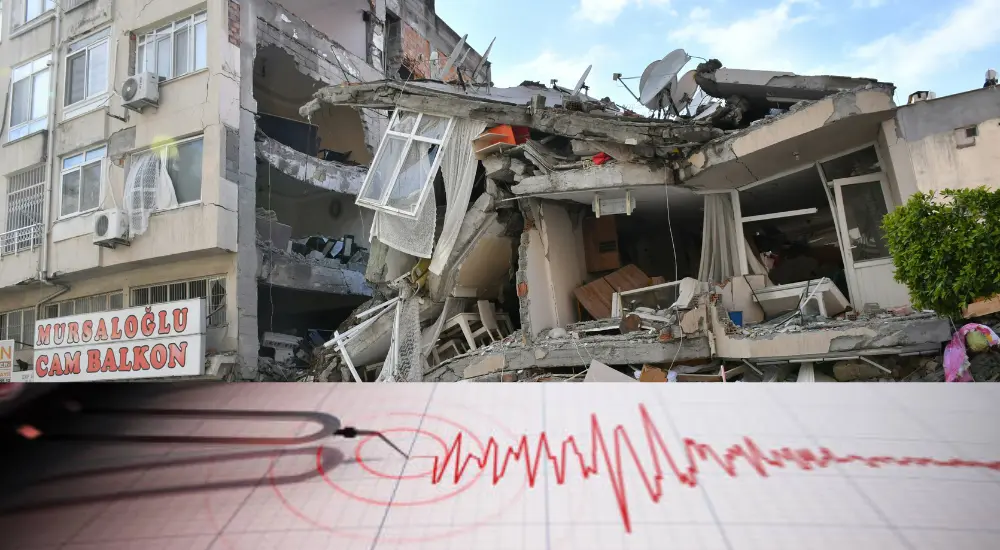Earthquake seismology is the scientific study of earthquakes and the seismic waves that propagate through the Earth. Seismologists use instruments called seismometers to detect and record the vibrations caused by an earthquake. The analysis of these waves helps scientists to determine the epicentre, depth, and magnitude of the earthquake. Study of earthquakes is very important for understanding the Earth’s internal structure, as seismic waves change speed and direction when they encounter different materials. Earthquake seismology also plays a vital role in assessing seismic hazards and developing early warning systems which help mitigate the impact of future earthquakes, ultimately saving lives and reducing damage.
1. What is the point on the Earth’s surface directly above the focus of an earthquake called?
(A) Epicentre
(B) Hypocentre
(C) Fault line
(D) Seismic zone
(A) Epicentre
Explanation: The epicentre is the point on the Earth’s surface directly above the focus (hypocentre) of an earthquake, where seismic waves are first felt.
2. Which type of seismic wave travels fastest through the Earth?
(A) S-waves
(B) P-waves
(C) Surface waves
(D) Rayleigh waves
(B) P-waves
Explanation: P-waves (primary waves) are the fastest type of seismic wave, traveling through both solids and liquids.
3. What scale is commonly used to measure the magnitude of an earthquake?
(A) Mercalli scale
(B) Richter scale
(C) Mohs scale
(D) Beaufort scale
(B) Richter scale
Explanation: The Richter scale is commonly used to measure the magnitude of an earthquake, quantifying the energy released.
4. Which type of fault is associated with horizontal movement of tectonic plates?
(A) Normal fault
(B) Reverse fault
(C) Strike-slip fault
(D) Thrust fault
(C) Strike-slip fault
Explanation: A strike-slip fault is associated with horizontal movement of tectonic plates, where the plates slide past each other laterally.
5. What is the main cause of tsunamis?
(A) Volcanic eruptions
(B) Underwater earthquakes
(C) Meteorite impacts
(D) Landslides
(B) Underwater earthquakes
Explanation: Underwater earthquakes, especially those that cause significant vertical displacement of the seafloor, are the main cause of tsunamis.
6. Which instrument is used to detect and record seismic waves?
(A) Barometer
(B) Anemometer
(C) Seismometer
(D) Hygrometer
(C) Seismometer
Explanation: A seismometer is an instrument used to detect and record seismic waves generated by earthquakes.
7. What is the term for the measure of the amount of ground shaking at a specific location caused by an earthquake?
(A) Magnitude
(B) Intensity
(C) Frequency
(D) Amplitude
(B) Intensity
Explanation: Intensity measures the amount of ground shaking at a specific location, often described using the Modified Mercalli Intensity (MMI) scale.
8. Which seismic waves cause the most damage during an earthquake?
(A) P-waves
(B) S-waves
(C) Surface waves
(D) Body waves
(C) Surface waves
Explanation: Surface waves, which travel along the Earth’s surface, cause the most damage during an earthquake due to their larger amplitude and longer duration.
9. What is a foreshock in earthquake seismology?
(A) A smaller earthquake that follows the main shock
(B) A smaller earthquake that precedes the main shock
(C) A seismic event caused by volcanic activity
(D) A secondary wave generated by the main shock
(B) A smaller earthquake that precedes the main shock
Explanation: A foreshock is a smaller earthquake that occurs before the main shock of a larger seismic event.
10. How can earthquake magnitude and intensity be differentiated?
(A) Magnitude measures the size of an earthquake; intensity measures the damage caused
(B) Magnitude is a subjective measure; intensity is objective
(C) Magnitude varies with location; intensity is constant
(D) Magnitude is measured on the Mercalli scale; intensity is measured on the Richter scale
(A) Magnitude measures the size of an earthquake; intensity measures the damage caused
Explanation: Magnitude is a measure of the total energy released by an earthquake, while intensity measures the effects and damage caused by the earthquake at specific locations.
11. What is the term for the initial rupture point within the Earth where an earthquake originates?
(A) Epicentre
(B) Hypocentre
(C) Fault plane
(D) Seismic focus
(B) Hypocentre
Explanation: The hypocentre, also known as the focus, is the initial rupture point within the Earth where an earthquake originates, and seismic waves are first generated.
12. What type of fault is created by tensional forces and results in the hanging wall moving downward relative to the footwall?
(A) Reverse fault
(B) Strike-slip fault
(C) Normal fault
(D) Transform fault
(C) Normal fault
Explanation: A normal fault is created by tensional forces, causing the hanging wall to move downward relative to the footwall.
13. Which layer of the Earth do S-waves not travel through?
(A) Crust
(B) Mantle
(C) Outer core
(D) All of the above
(C) Outer core
Explanation: P-waves travel through all layers of the Earth, including the crust, mantle, and core, while S-waves travel through the crust and mantle but cannot travel through the liquid outer core.
14. How do seismologists locate the epicentre of an earthquake?
(A) By analysing the intensity of ground shaking
(B) By triangulating data from three or more seismograph stations
(C) By measuring the amplitude of surface waves
(D) By calculating the duration of the earthquake
(B) By triangulating data from three or more seismograph stations
Explanation: Seismologists locate the epicentre of an earthquake by triangulating data from at least three seismograph stations, using the arrival times of P-waves and S-waves.
15. What is the name of the scale that measures the total energy released by an earthquake?
(A) Mercalli scale
(B) Richter scale
(C) Moment magnitude scale
(D) Fujita scale
(C) Moment magnitude scale
Explanation: The moment magnitude scale measures the total energy released by an earthquake and is considered more accurate than the Richter scale for large earthquakes.










